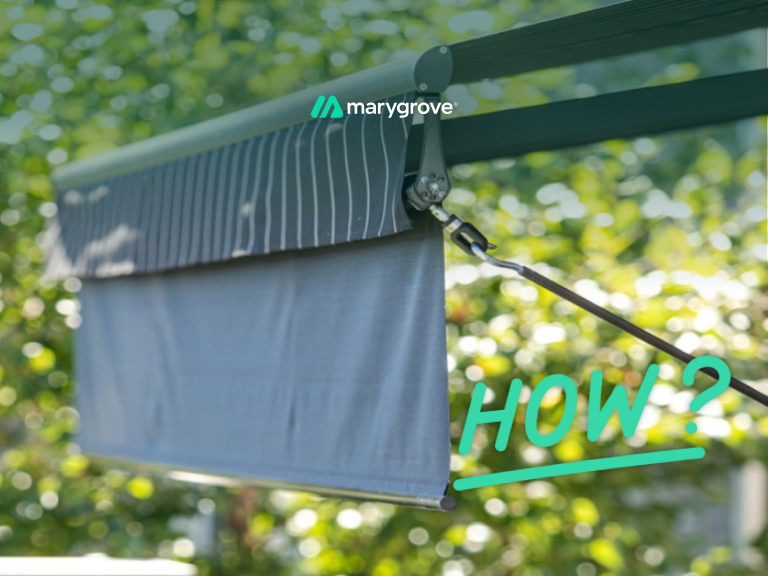Retractable awnings extend and retract using a roller tube and tensioned arms, either manually with a crank or automatically with a motor, giving you instant control over sun and shade.
How Retractable Awnings Work: Quick, Straightforward Breakdown
Retractable awnings roll in and out smoothly using tension and rotation, giving you flexible shade and comfort in sun, light rain, or everyday use.
Here’s what you need to know at a glance:
- Roller tube: Central rotating shaft that releases or rolls back fabric
- Arms: Extend and hold the awning in place, articulated (manual) or telescopic (motorized)
- Manual option: Crank it open or closed, simple, no electricity needed
- Motorized option: Use a button, remote, or app, often with smart home integration
- Cassette style: Choose full or semi housing for protection when retracted
- Fabric: UV-resistant, water-repellent, and critical for long-term durability
Whether you prefer a hands-on setup or full automation, the right retractable awning gives you effortless shade, privacy, and weather protection with just one motion.
And if you want to go deeper, from mechanics to smart features to real-world install perks, you’ll want to stick around till the end.
What Are Retractable Awnings and How Do They Work?
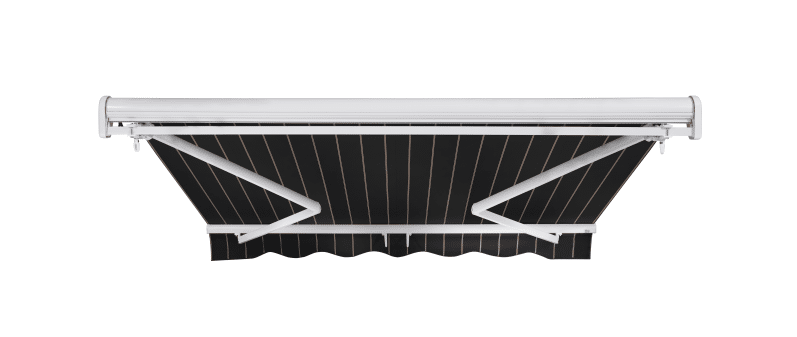
Retractable awnings are adjustable outdoor shade systems that roll out when you need cover and retract when you don’t.
Unlike fixed awnings, they offer flexible control over sun and shade.
With a simple crank or remote, the roller tube unwinds a sheet of fabric, guided outward by side arms that extend like elbows to create a shaded canopy, then fold back in when retracted.
There are two common types of mechanisms that make this happen:
- Spring-Loaded Articulated Arms (Manual): These work like your elbow. Cranking the handle builds tension in the springs inside the arms, pushing them outward and opening the awning. To retract it, you simply turn the crank the other way, and the springs pull everything back in.
- Gas-Filled Telescopic Arms (Motorized): These are powered by pressurized gas inside sealed cylinders. When the motor kicks on, it drives the arms outward smoothly. To close the awning, the motor reverses, and the arms contract just as easily.
Manual or motorized, every awning depends on a roller tube to roll fabric evenly, preventing sagging, jams, or tension issues during regular use.
While the basic function is shared, the way each awning operates can dramatically affect how you use it day to day.
Helpful Resource → How Long Do Awnings Last? Lifespan by Type & Care Tips
Understanding Retractable Options: Manual vs Motorized Awnings
One of the first decisions you’ll make when choosing a retractable awning is whether to go with a manual or motorized system.
Both are designed to give you flexible shade on demand, but the way they operate, and the kind of experience they deliver, can feel very different.
If you’re trying to figure out which one fits your lifestyle, budget, or space setup, the comparison below lays out the key differences at a glance:
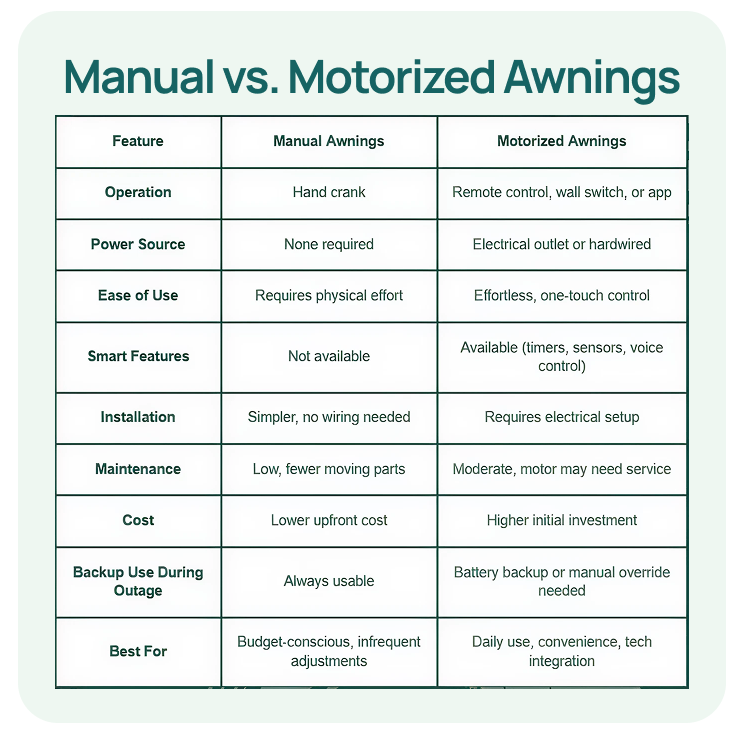
Now let’s take a closer look at manual vs motorized, and why one might be a better fit for your needs.
Manual Awnings
Manual awnings are powered by, you guessed it, your own elbow grease.
You turn a hand crank to extend or retract the canopy. Inside, spring-loaded arms stretch outward and pull the fabric taut.
It’s simple and effective, especially for smaller patios or where power access is limited.
Pros
- Lower cost
- Easy to install, no wiring required
- Minimal upkeep
Cons
- Manual effort required
- No smart features or automation
- Less convenient for frequent use
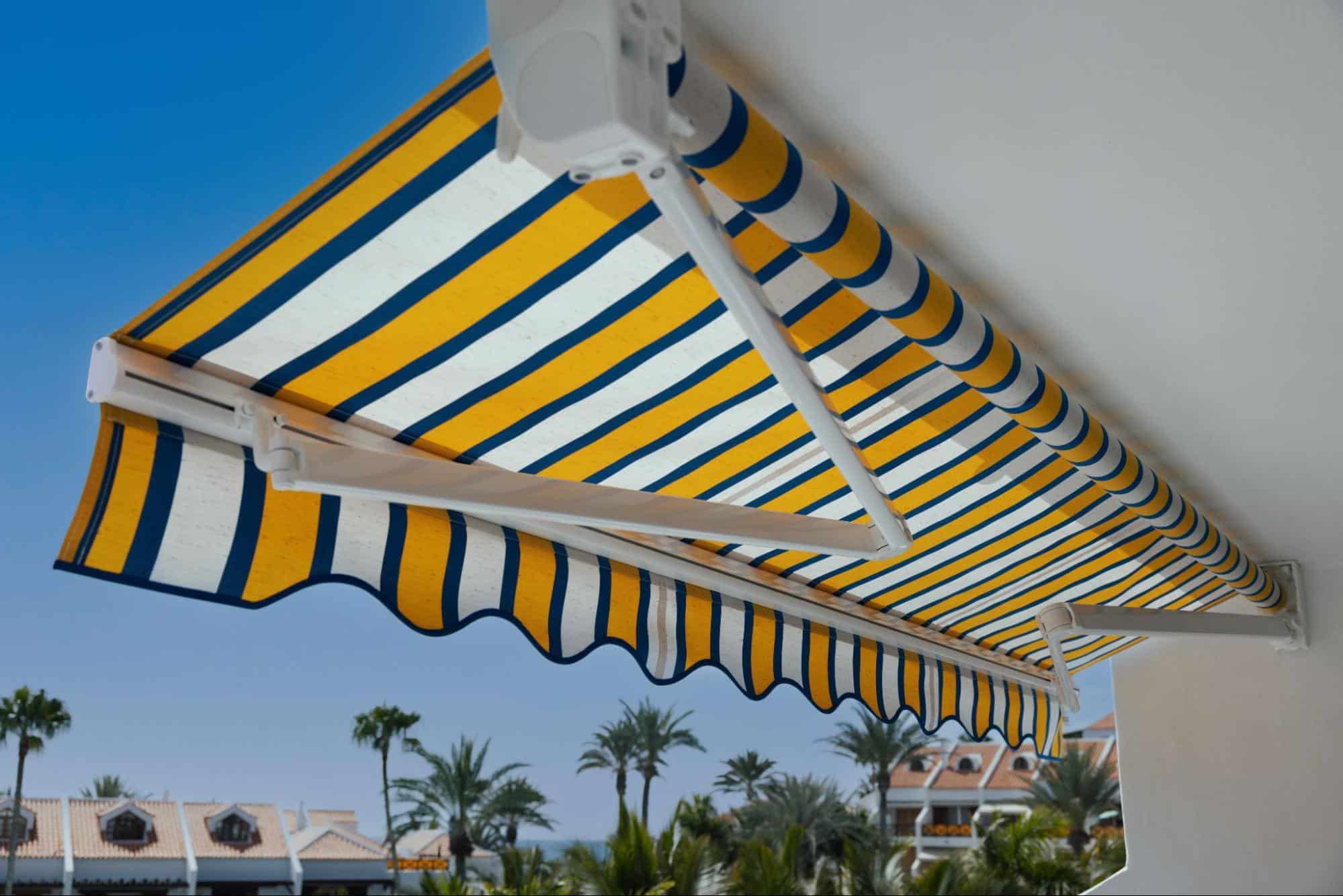
Motorized Awnings

Motorized awnings use an electric motor to do the heavy lifting.
You can control them with a button, a remote, or even an app. Many also feature gas-filled telescopic arms for smoother, more powerful movement.
Pros
- Convenient one-touch or app-based operation
- Compatible with smart home systems
- Ideal for larger setups or daily use
Cons
- Requires access to power or electrical setup
- May involve basic wiring depending on your space
And if you’re wondering, “Can I still use it during a power outage?”
Most high-quality models offer battery backups or a manual override, so you’re never stuck with your awning halfway open during bad weather.
Regardless of which type you choose, every retractable awning depends on a few key components working together behind the scenes.
Helpful Resource → 15 Best Retractable Patio Awning Ideas for Your Backyard
Common Parts in a Retractable Awning System
Retractable awnings may seem simple from the outside, but under the hood, they’re powered by a small group of well-engineered parts, each one playing a key role in performance, durability, and ease of use.
Here’s a breakdown of the core components you’ll find in most retractable awning systems:
1. Roller Tube
The roller tube is the backbone of the system. It holds the fabric and rotates to release or retract the canopy.
Whether you’re using a manual crank or motorized control, everything begins and ends with this tube.
A high-quality roller ensures smooth operation and prevents sagging or bunching, especially with larger awnings or in windy conditions.
2. Arms
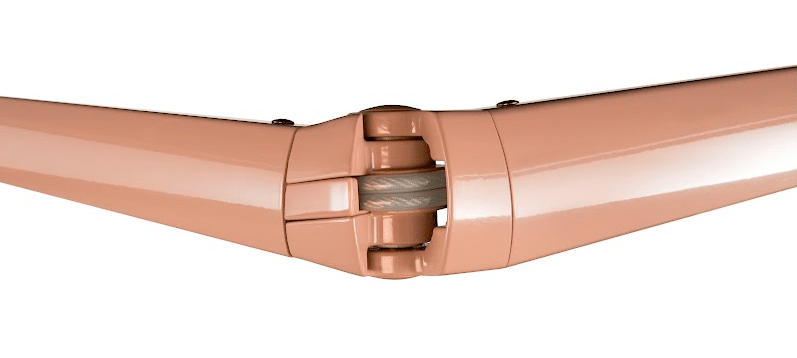
These are the moving parts that extend outward as the awning opens.
Manual systems typically use spring-loaded articulated arms, while motorized models use gas-filled telescopic arms. They function like elbows, supporting the fabric and maintaining tension.
Well-engineered arms help prevent drooping and fluttering, even during breezy days.
3. Fabric
The fabric is what provides the actual shade. Common materials include polyester and acrylic, but not all are created equal.
Polyester fabrics are known for their strength, wrinkle resistance, and color retention, making them a durable option for consistent outdoor use.

When treated with UV and water-resistant coatings, quality polyester can stand up well to sun, mildew, and light rain.
It’s not just about looks, fabric quality directly affects how long your awning holds up and how well it performs across seasons.
4. Mounting Brackets
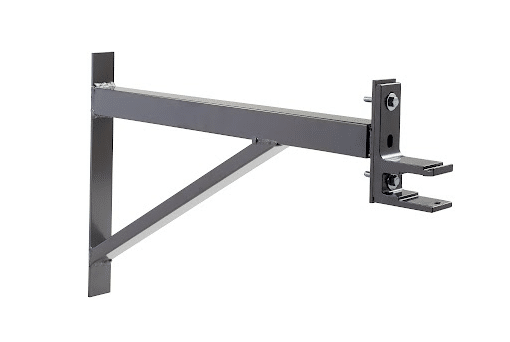
Mounting brackets secure the entire awning system to your home.
They’re typically installed on exterior walls, like siding, brick, or stucco. A common question is, “Do these put stress on the wall?” The answer: not if installed properly.
Brackets are designed to distribute weight evenly, and quality awnings use multiple mounting points to ensure long-term stability.
For surfaces like vinyl siding, special hardware and reinforcement techniques are often used to avoid damage.
5. Motor (For Motorized Models)
The motor is what drives the automation. It’s housed within the roller tube or mounted externally, depending on the design.
When activated, it rotates the roller tube to extend or retract the fabric.
Many motors today are compatible with remote controls, wall switches, mobile apps, and even smart home systems. Some also include weather sensor integration for added automation.
Each of these parts plays a role in how reliably your awning works, and how long it lasts. Understanding what they do helps you make better choices when buying, installing, or troubleshooting your system.
Now that you know what each part does, let’s look at how different mechanisms use them to create movement, protection, and ease of use.
Types of Retractable Mechanisms
Retractable awnings may all serve the same purpose, providing flexible shade, but the internal mechanics can vary quite a bit depending on the design and level of automation.
Here are the most common types you’ll come across:
1. Manual Crank with Articulated Arms
This system uses a hand crank to operate the awning. As you turn it, spring-loaded articulated arms (which bend like elbows) push the fabric outward.
These are simple, durable, and don’t require any electricity, making them a solid option for smaller spaces or places where power access is limited.
Ideal for: Occasional use, budget-friendly installs, low-maintenance setups.
2. Motorized with Telescopic Arms
In this setup, an electric motor handles the motion.
Telescopic arms, powered by pressurized gas or piston mechanisms, extend and retract the awning with strong, smooth movement. These are often paired with remote controls, mobile apps, or smart home integration.
Ideal for: Frequent use, smart automation, and larger awning systems.
3. Full Cassette vs Semi Cassette
Beyond how they move, retractable awnings also differ in how much protection they offer when closed. That’s where cassette style comes in:
- Full Cassette: The entire awning, fabric, arms, and roller, is enclosed in a protective housing when retracted. Best for all-weather durability, especially in harsh climates.
- Semi Cassette: The fabric is partially protected, but the arms are still exposed. Suitable for milder conditions where full protection isn’t as critical.
Each mechanism type brings its own advantages depending on how often you use your awning, your setup, and your local climate.

It’s less about which is “best” and more about what fits your space and lifestyle.
Of course, not every awning offers the same features out of the box, some go a step further in making shade faster, smarter, and easier to live with.
What Makes Marygrove Awnings Smarter and Stronger
Not all retractable awnings are created equal.
Marygrove blends high-performance engineering with thoughtful upgrades that make outdoor living easier, faster, and more connected.
- Faster installs with inventoried sizes: By stocking popular sizes ahead of time, Marygrove cuts down lead times and gets awnings installed in days, not weeks.
- Built-in lighting, drop shades, and pitch control: Add evening ambiance, block low-angle sun, or adjust the canopy angle, all without extra tools or setup.
- Full in-house installation and support: Every project is handled by Marygrove’s own trained teams for a cleaner fit and consistent service, no third-party handoffs.
- Fabric-only replacements without a full reinstall: Want to refresh your look? You can replace the canopy without removing the entire frame.
- Smart automation that actually works: With app and voice control, plus wind and weather sensors, your awning adapts to your lifestyle, without you lifting a finger.
These features don’t just make your awning smarter, they make it more reliable, more intuitive, and better suited for real life.
Together, they turn a simple shade solution into a seamless extension of your home, built for comfort, speed, and total control.
Summary: Why Modern Awnings Are All About Control
Modern retractable awnings aren’t just about shade, they’re about having control over your space, your comfort, and your routine.
With smooth mechanics, smart automation, and thoughtful design, today’s awnings blend reliable engineering with everyday convenience.

Whether you prefer the simplicity of a manual crank or the ease of voice-activated control, the goal is the same: flexible protection that moves when you need it to, and disappears when you don’t.
If you’re looking for a system that combines speed, durability, and smart features built for real-life use, take a look at Marygrove’s retractable awning options, designed to deliver comfort without compromise.
To discuss your awning needs in person 👉 Schedule a Free Retractable Awning Appointment
